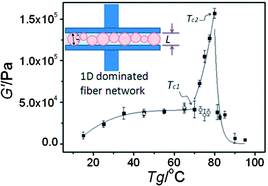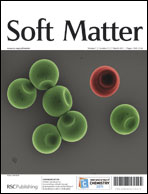Volume confinement induced microstructural transitions and property enhancements of supramolecular soft materials
Abstract
The rheological properties of supramolecular soft functional materials are determined by the networks within the materials. This research reveals for the first time that the volume confinement during the formation of supramolecular soft functional materials will exert a significant impact on the rheological properties of the materials. A class of small molecular organogels formed by the gelation of N-lauroyl-L-glutamic acid din-butylamide (GP-1) in


 Please wait while we load your content...
Please wait while we load your content...